As you eagerly await the arrival of spring, California is abuzz with the promise of a natural spectacle—the superbloom. After a particularly wet winter, the conditions are just right across the state's diverse landscapes, setting the stage for a dramatic eruption of wildflowers. With the hillsides and valleys poised to burst into a vivid tapestry of color, the California Superbloom 2024 promises to be a breathtaking sight.
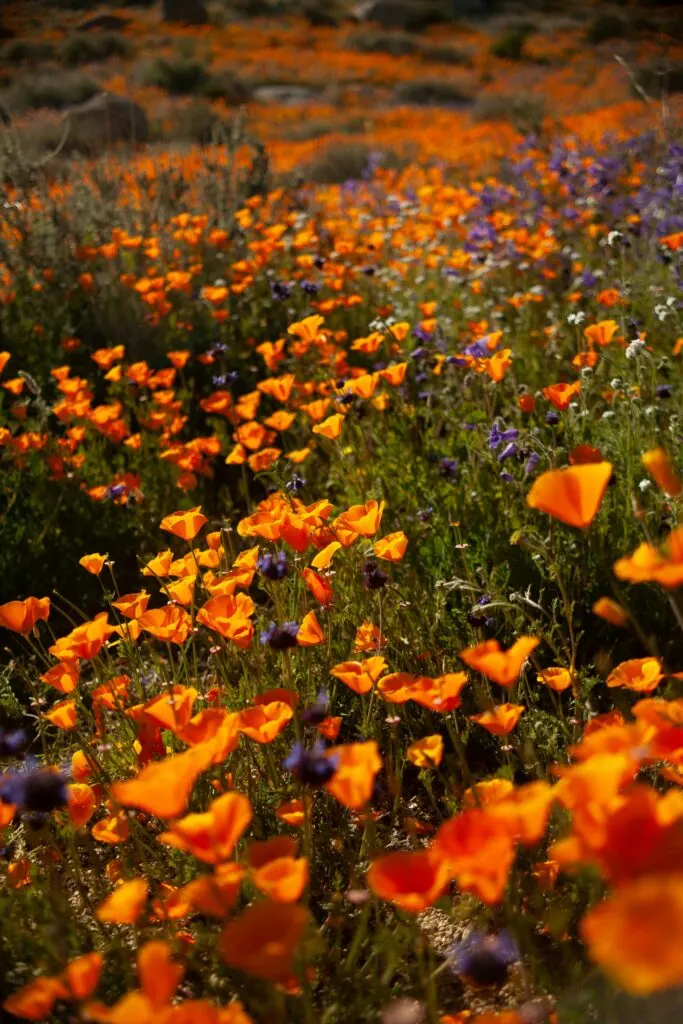
The superbloom, a term that has captured the imagination of nature lovers and photographers alike, denotes a year where an unusually dense and diverse array of wildflowers bloom simultaneously, creating a stunning, almost surreal landscape. For those of you who cherish the outdoors, now is the perfect time to start making plans to witness the blooms, as California's natural beauty awakens in a riot of color.
If you're curious about where to find the best viewing spots for the California superbloom 2024, you'll find informative guidance from local botanists and seasoned explorers. This year, the blooms are expected to be plentiful and widespread, so whether you're an avid hiker looking to tread among the flowers or a casual onlooker seeking the perfect picnic backdrop, there's a wildflower experience waiting for you.
California Superbloom 2024: A Burst of Color in the Golden State
What is a Superbloom?
You've probably heard the buzz about California's Superbloom 2024—a natural spectacle that paints landscapes in vibrant hues. Below, you'll find out what exactly a Superbloom is and why winter rains are crucial to this phenomenon.
Defining Superbloom
Superbloom is a term that describes the occasional, eye-catching display of wildflowers that blanket California's landscapes. This event is not just any seasonal bloom; it signifies an exceptionally large and dense flowering that transforms hills, valleys, and fields. The harmonious bloom of numerous wildflower species creates a mosaic of color that's not only visually striking but also a boon for local pollinators like bees and butterflies. Superblooms typically appear in the Spring, following the perfect recipe of environmental conditions.
The Role of Winter Rainfall
Rainfall during the Winter months is the secret ingredient to a Superbloom's success. Adequate and well-timed precipitation seeps into the Earth, setting the stage months in advance. It is the intricate balance of enough rain to saturate the soil—but not so much as to cause flooding or mudslides—that primes the dormant seeds of wildflowers. Once these seeds receive all the necessary cues, which include ample moisture and increasingly warm temperatures, they begin to germinate, setting up for a breathtaking Superbloom come Spring.
Historical Superblooms
California's superblooms are rare, spectacular events that grace your state's landscape under the right conditions. They're the stuff of wonder, turning ordinary fields into canvases of color — a phenomenon steeped in the history and weather patterns of the region.
Notable Years
- 1998: Mark this as the year of one of the most memorable superblooms in recent history, where El Niño-driven rains drenched the California deserts.
- 2017: Skip a few years to when an unusually wet winter led to a dazzling display across the Anza-Borrego Desert State Park and other areas, reigniting interest in these natural events.
Patterns and Predictions
- The science of predicting superblooms involves understanding the weather conditions — adequate rainfall, absence of drying winds, and optimal temperatures.
- Keep an eye on reports from Death Valley and Antelope Valley, as these places often give you a hint of what's coming. Past patterns suggest a convergence of rainfall with the timing of the growth period can hint at a potential superbloom.
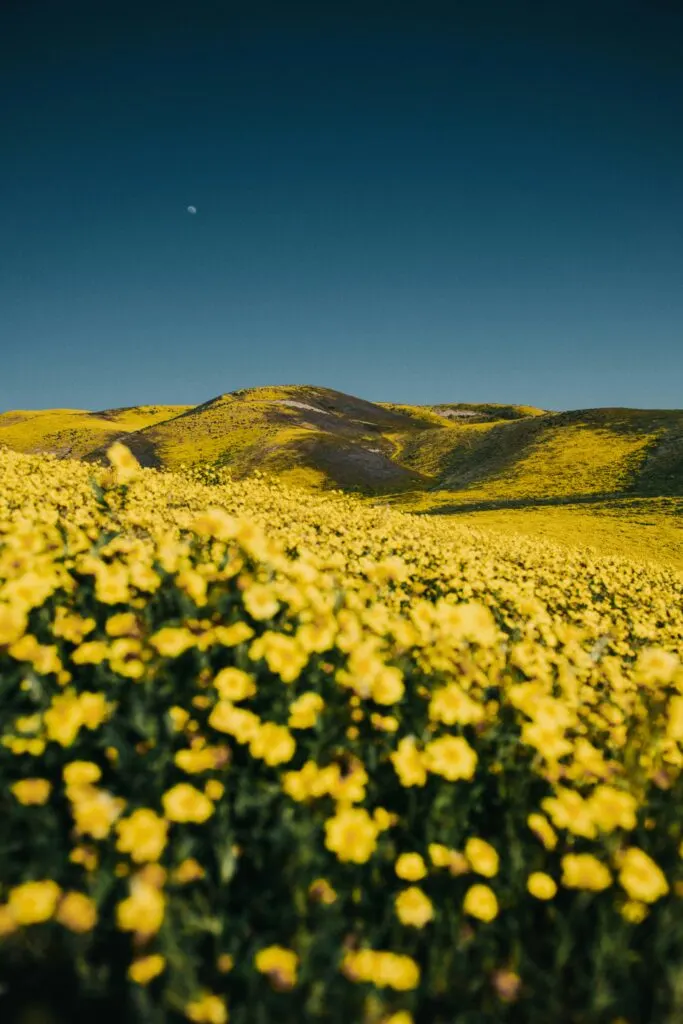
Scientific Explanation
As you explore the California Superbloom 2024, it's captivating to understand that certain ecological factors trigger the mass flowering event you're witnessing. Ideal rainfall, soil conditions, and other factors lead to a spectacle seen only under the right conditions.
Seed Germination
Seeds within the desert's soil bank are awaiting cues to commence their life cycle; water being the primary signal. When heavy rain saturates the desert after prolonged drought, it triggers a process named stratification, softening the seed coatings and signaling them to germinate. Germination requires a harmony of elements:
- Adequate rainfall to moisten the seeds.
- Appropriate elevation and soil temperatures to encourage growth.
This timing leads to synchronized sprouting, which, with continued favorable weather, results in a superbloom.
Ecological Impact
The Superbloom's ecological impact is as vibrant as its colors. You'll find a burst of activity in the ecosystem, from pollinators like bees and hummingbirds to a variety of fauna feeding on the abundant life:
- The explosion of flowers provides food for insects.
- Increased pollination enhances plant diversity.
- Desert soil is revitalized by plant decay post-bloom, adding nutrients back into the ecosystem.
Native Wildflowers of California
California's superbloom brings a spectacular display of native flora. Here, you'll discover some of the most iconic and vibrant wildflowers gracing the landscapes of the Golden State.
California Poppy
Eschscholzia californica, or as you might know it, the California Poppy, is the state flower. Every spring, these bright orange blossoms create a striking contrast against the green rolling hills. You can often find them blooming en masse in spots such as the Antelope Valley California Poppy Reserve.
Lupines
Lupinus, commonly referred to as Lupines, are identifiable by their spiky blooms and impressive range of colors from deep purples and blues to pinks and whites. These flowers thrive under full sun and are a fixture in California's wildflower hotspots.
Sand Verbena
Lastly, Abronia villosa, or Sand Verbena, presents itself with clusters of pink or magenta flowers. They tend to grow low to the ground, often in sandy areas like deserts and beaches. Their fragrant presence is a treat during a superbloom and can be anticipated in areas like Joshua Tree, as discussed in AFAR's magazine article.
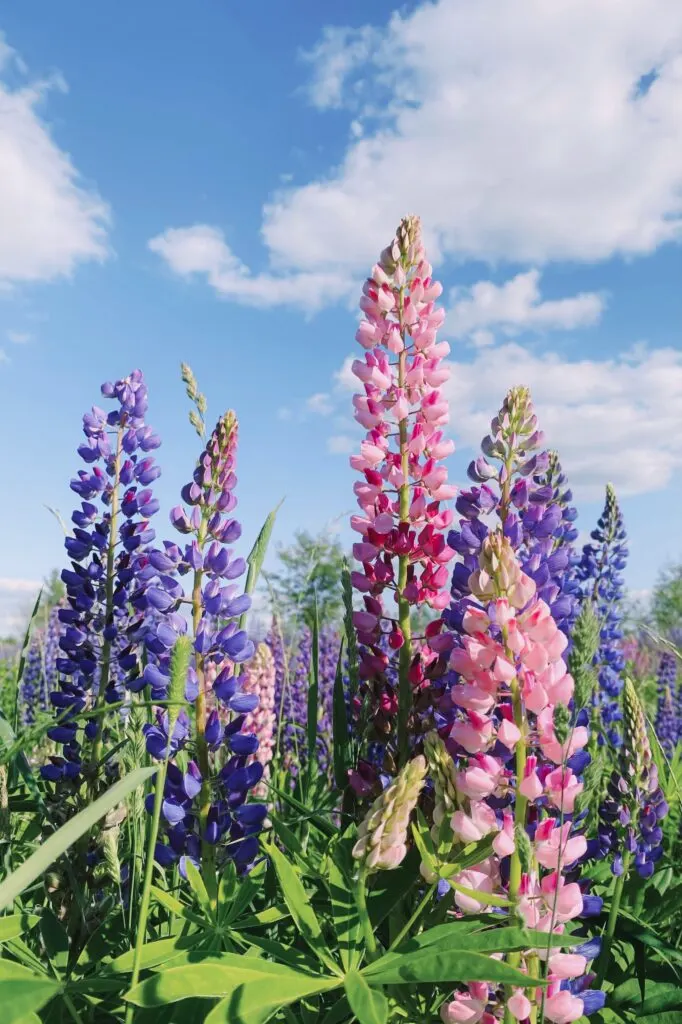
Popular Locations
California's superbloom is a must-see natural spectacle, with several locations offering breathtaking views of vibrant wildflower carpets. Here is a guide to some of the best spots where you can witness this colorful phenomenon.
Lake Elsinore and Walker Canyon
Lake Elsinore in southern California transforms with a dazzling display of wildflowers during the superbloom season. Walker Canyon, located just nearby, is particularly noteworthy for its abundant poppies that create a brilliant orange blanket over the hills. It's easily accessible and provides a great opportunity for hiking among the blooms.
Antelope Valley California Poppy Reserve
The Antelope Valley California Poppy Reserve is renowned for its golden fields of California poppies. When conditions are just right, the state flower unfurls in a show-stopping display that's hard to miss. The reserve has several trails that allow you to immerse yourself in the midst of these delicate flowers.
Anza-Borrego Desert State Park
Anza-Borrego Desert State Park is another prime location for superbloom seekers. The desert comes alive with a variety of wildflowers ranging from purples and yellows to reds and whites. The park's diverse topography means you'll find different species blooming at various elevations, making for a beautiful and varied experience.
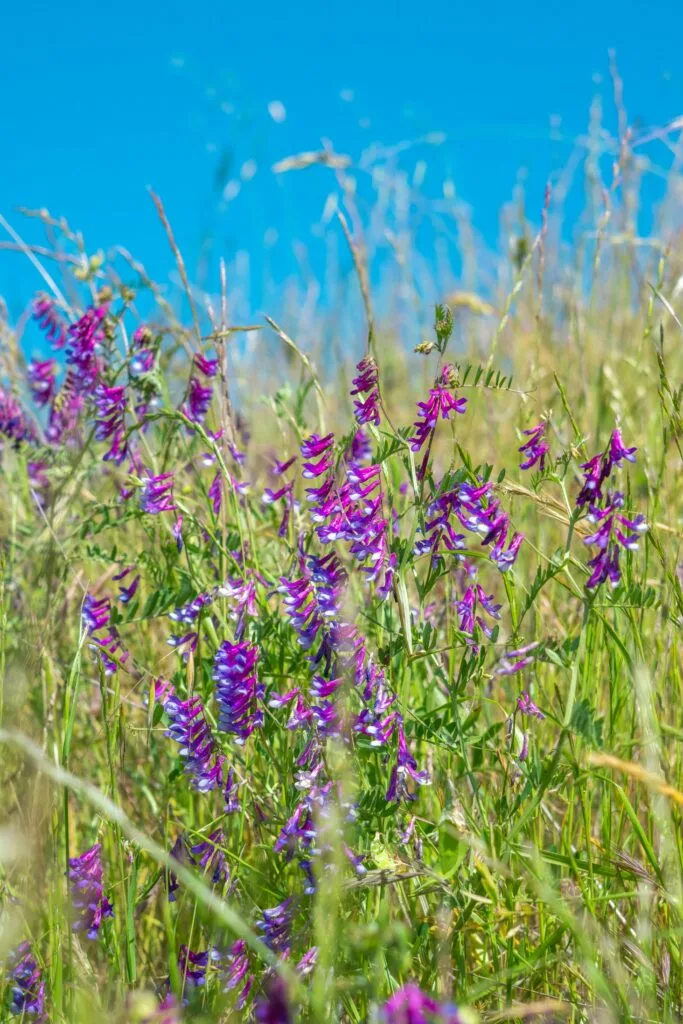
Related Post:
- Best Hikes to See Wildflowers in California: Your Ultimate Trail Guide
- Wildflowers in California: A Guide to the State's Colorful Blooms
California Superbloom 2024 – Best Times to Visit
Planning your visit to experience the vibrant California Superbloom in 2024 is essential. The peak bloom can vary, so it's best to time your visit to catch the hillsides and valleys at their most colorful.
Peak Blooming Periods
The superbloom is a remarkable event that typically peaks in mid-March. However, the exact timing can fluctuate based on weather patterns and rainfall during the winter and early spring. To witness the full glory of the wildflowers, keep an eye on local updates and reports from areas known for Superblooms.
- Mid-March: Often the best time for peak colors, especially in lower elevations.
- May: Higher elevations may see later blooms, offering a second chance to view wildflowers.
- June: While earlier months are generally better, you can sometimes find late-blooming species in select areas.
Monthly Breakdown
February to May: Ideal for visiting, with blooming phases shifting from early desert wildflowers to higher altitude blooms.
- February: Start of the desert bloom in areas like Anza-Borrego Desert State Park.
- March: Peak season in many regions, including the Antelope Valley.
- April: Blooms continue, especially in coastal and inland areas.
- May: Higher elevations such as the Sierra Nevada Mountains begin to see more wildflowers.
For the latest information on where to see the superbloom, consider checking updates from the Antelope Valley Poppy Reserve, which offers poppy updates and a wildflower hotline for enthusiasts.
Photography Tips
When visiting the California Superbloom 2024, your goal is to capture the breathtaking colors and essence of this natural event. Grasp the full palette of the bloom and preserve its beauty in your photographs while respecting the environment.
Capturing the Colors
To truly showcase the vibrant colors of the Superbloom, play with the golden hours of sunrise and sunset, when the light is soft and warm. This natural lighting will enhance the reds, oranges, and yellows of the wildflowers. Use a polarizing filter to make the colors pop against the blue sky and to reduce glare. Try photographing with your back to the sun to deepen the hues and add drama to your shots.
For Instagram-worthy shots, compose your images with the rule of thirds in mind; placing the horizon on the top or bottom third can create an engaging balance between the sky and the sea of flowers. Experiment with different lens choices: a macro lens for intimate details, a wide-angle lens for sweeping landscapes, or a telephoto lens to compress the scene and focus on distant details, as suggested by the tips to Capture the California Superbloom.
Ethical Photography Practices
While capturing the Superbloom, it is crucial to practice ethical photography. Always stay on designated paths and avoid trampling the flowers for the perfect shot. Not only does this protect the delicate ecosystem, but it also allows others to enjoy the Superbloom untouched. Be mindful of the surroundings and keep noise levels to a minimum to respect wildlife and other visitors.
Remember to share responsibly on social media. When posting on Instagram, consider including a note about the importance of preserving natural wonders like the Superbloom. Your influence can encourage others to adopt responsible photography practices, ensuring these landscapes can be appreciated by future generations.
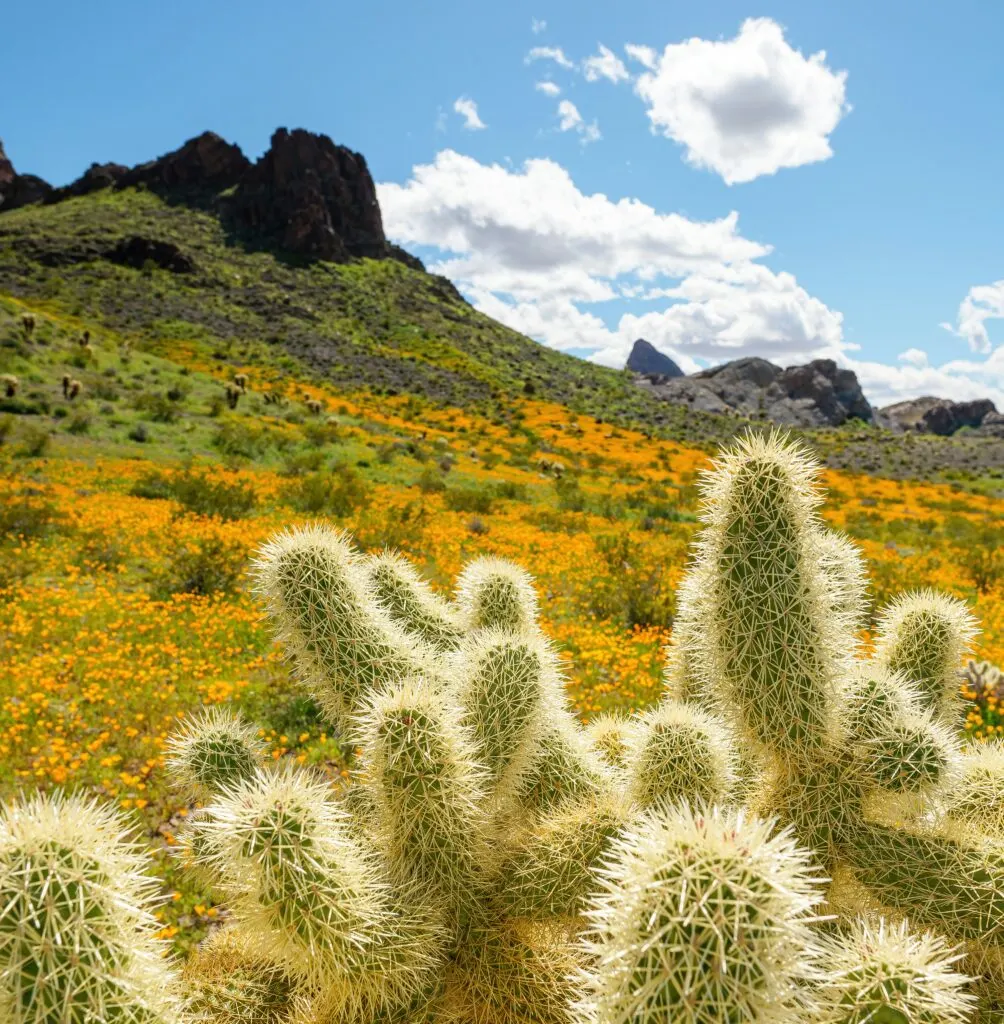
Responsible Tourism
Visiting the California Superbloom 2024, you play a crucial role in preserving its natural beauty. By following responsible tourism practices, you ensure that future generations can also enjoy this extraordinary event.
Leave No Trace Principles
- Plan Ahead and Prepare: Research the superbloom areas and prepare for restrictions and guidelines before you arrive.
- Travel and Camp on Durable Surfaces: Stick to established trails and avoid trampling wildflowers, which could prevent them from returning next year.
Remember, your actions can support Wildlife Protection by minimizing disturbances to their natural habitat.
Reducing Environmental Impact
- Carry In, Carry Out: Keep the superbloom pristine by removing all your trash.
- Minimize Campfire Impacts: If you choose to camp, opt for a camp stove rather than a campfire to protect the surrounding vegetation.
By respecting these guidelines, you help in protecting the environment and also ensure No Trace of your visit remains, keeping the area safe and beautiful for Visitors and wildlife alike.
Climate Change Effects
When you think about the superbloom in California, you might picture endless fields of vibrant wildflowers. But climate change is subtly altering this natural spectacle. Temperature fluctuations and varying precipitation patterns impact not only the timing but also the intensity of these blooms.
Shifts in Bloom Cycles
Climate change has led to changes in the timing of the seasonal events for wildflowers. The superbloom now tends to occur earlier than in past decades due to rising temperatures. Unseasonably warm weather can trigger early flowering, while sudden cold snaps can damage the buds, creating a mismatch in ecosystem balance.
Drought and Its Impact
Extended periods of drought have a profound impact on the superbloom. Lack of sufficient precipitation hinders seed germination, limiting the extent of the bloom. Persistent dry conditions can also lead to long-term soil degradation, which compromises the future resiliency of these wildflower displays.
Wildflower Viewing Etiquette
When witnessing the spectacular wildflower blooms in California's state parks, it's essential that you enjoy the beauty responsibly to preserve it for future visitors. Committing to Leave No Trace principles ensures the superbloom can be enjoyed by everyone.
Dos and Don'ts
Do:
- Take plenty of photos, but use only your eyes and camera to ‘pick' the flowers.
- Respect wildlife by maintaining a safe and non-disruptive distance.
- Bring a bag to carry out all of your trash, including organic waste like fruit peels.
Don't:
- Don't pick the flowers. They are here for everyone to enjoy and need to seed for the next season.
- Don't step on the flowers. Even if there isn't a visible trail, straying from the designated trails can damage the delicate ecosystem.
- Don't leave behind any trash or belongings, to Keep California Beautiful.
Staying on Designated Trails
Designated Trails are carefully planned to:
- Protect plant life and prevent soil erosion.
- Ensure visitor safety by guiding you along the safest and most stable paths.
When you're exploring state parks:
- Always stay on marked trails to protect the flowers and your safety.
- If a trail seems crowded, consider visiting another time or choosing a less-traveled path.
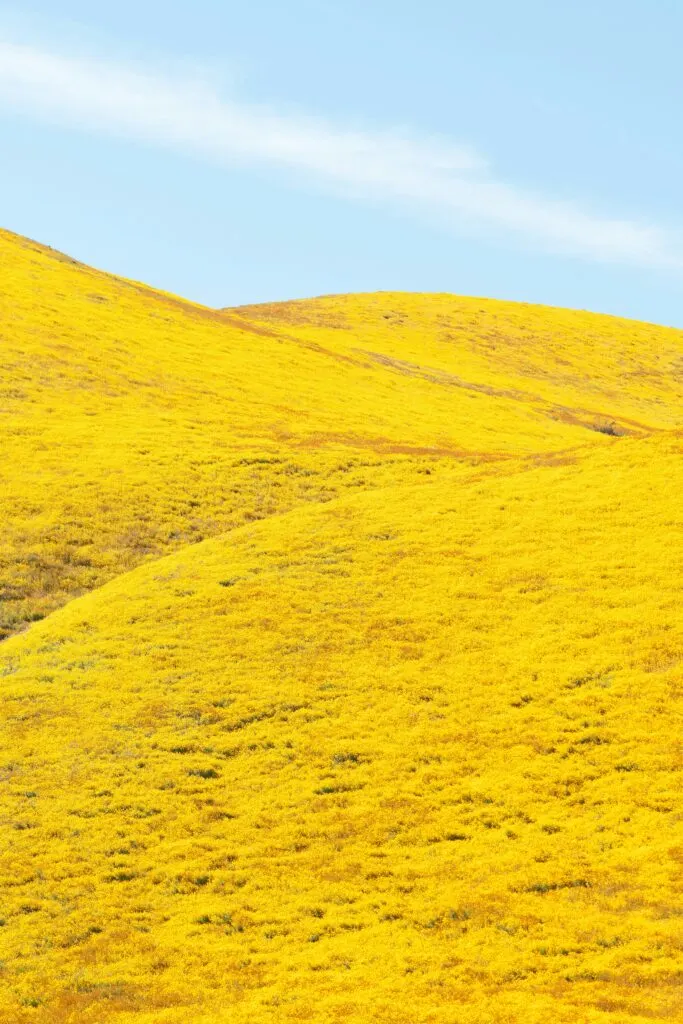
Making the Most of Your Visit
To ensure a memorable and safe experience during the California Superbloom 2024, it's important to plan your trip carefully and come prepared. You'll want to consider the timing of your visit, pack appropriate gear, and familiarize yourself with the natural environment.
Planning Your Trip
- Timing: Begin by choosing the best time to see the wildflowers bloom, which can vary from year to year. Generally, March and April are the peak months for lower elevations, while higher elevations tend to bloom from April through June.
- Destinations: Research the best viewing areas, such as Anza-Borrego State Park, famous for its early and diverse flower displays. Hiking trails here cater to all levels, from simple walks to more challenging hikes.
- Guides: Consider hiring a local guide. A knowledgeable guide can enhance your experience by leading you to the best spots and sharing insights about the local ecosystem.
Safety and Preparation
- Apparel: Always wear a wide-brimmed hat and apply sunscreen to protect yourself from the sun, even on cloudy days. The sunlight can be surprisingly strong, and it’s best to play it safe.
- Hydration: Bring plenty of water to stay hydrated, especially if you plan to explore hiking trails. A rule of thumb is to carry at least one gallon per person per day.
- Trail Etiquette: Stick to marked trails to avoid damaging the delicate wildflowers. Respect the natural beauty for everyone to enjoy and for the preservation of the ecosystem.
- Emergency Preparedness: Have a basic first aid kit and know the location of the nearest medical facility. Always inform someone of your hiking plans and expected return time.
Frequently Asked Questions
Exploring the California superbloom is an exhilarating adventure you'll want to plan for. Here are some FAQs to help guide your journey into the sea of wildflowers.
When is the peak time to experience the superbloom in Southern California?
The best months to witness the superbloom in Southern California are typically March and April when the desert landscapes and lower elevations become canvases of vibrant wildflowers.
What are the predicted locations for the most vibrant superbloom displays this year?
Areas anticipated to showcase the most spectacular wildflower displays this year include Antelope Valley State Park and other locations across California where the conditions for a superbloom are just right.
Which parks or reserves in California are hosting special events for the superbloom season?
Several parks and reserves, such as Antelope Valley State Park, plan special events during the superbloom season. Check local park websites for the latest event information.
Are guided tours available to see the superbloom, and how do I join one?
Guided tours are often available, offering you a chance to experience the superbloom with experts. To join, visit official park or tour company websites to book a spot.
What should one bring and prepare for when planning to see the California superbloom?
Prepare for your visit by packing water, sunscreen, and snacks. Most importantly, remember to enjoy from a distance—stay off the flowers and stay on designated trails.
Are there any travel or photography tips for those visiting the superbloom areas?
For the best travel and photography experience, arrive early to avoid crowds and ensure perfect lighting for photos. Respect the natural landscape and follow guidelines to protect the wildflowers for everyone to enjoy.
